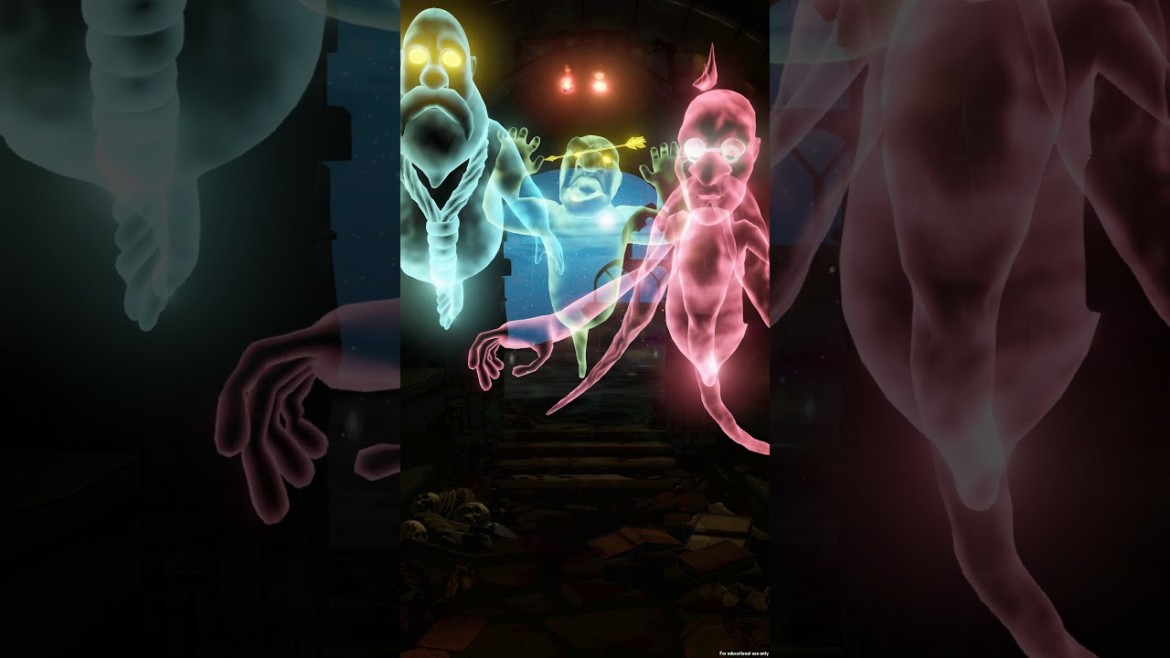Producer of many student projects in the School of Game Development, Victoria “Via” Pruitt’s communication skills help bring teams together
“Clan Helsing,” “Face,” “TeenTend,” Tony DiTerlizzi’s “Magic Mirror,” Norman Rockwell VR Experience, “Sugar Sleuths,” “Hazel: The Game,” “Foodiecats: The Game,” “A Thief’s Tale,” “Junho”—these are but a few of the outstanding projects developed within the last few semesters by students in the School of Game Development at Academy of Art University. There is one student, however, who has her fingerprints on all of them: Victoria “Via” Pruitt.
For the listed projects, Pruitt acted as producer—the glue, the guru, the communicator and all-around calming problem-solver: “If something’s about to happen, I just reorganize things so I can say, ‘Okay, we’re going to be fine,’” she explained.
Coming into the Academy, Pruitt didn’t know she was going to fall into this role. Enrolled as a B.F.A. game design major who arrived at the university from Stockton, California in 2013, Pruitt said it was Steven Goodale, game design lead, who prodded her into taking on the responsibilities and introduced her to David Jimenez, her producing instructor.

School of Game Development student Victoria “Via” Pruitt. Photo courtesy of the School of Game Development.
“She really is good at what she does, as a manager and as a student resource,” Jimenez said, praising the ways Pruitt approaches team organization, relationship-building and communication with a passion. “It’s a unique quality you see when someone like her loves the project and the team.”
Pruitt took it upon herself to take the beginner classes of every single game discipline and a few advanced courses as well. Knowing how long certain processes take helps set expectations for designers, coders, modelers, and programmers within the project timeframe. To summarize what a game producer specifically does, Jimenez jokingly simplified it to being “the enemy of fun.”
“The unique challenge of being a producer is that sometimes you have to be blunt, terse,” he said. But Jimenez elaborated further, stating that the producer role ensures everything is flowing smoothly and must have a mindset where they “feel so inclined to look after people and go after the different aspects of game and the people involved.”
“Watching her interact with her peers, she’s really good at what she does and they’re very accepting of her,” Jimenez said.
Pruitt’s peers mirror the words of her instructors. Game design students Ben Stewart and My Nguyen both worked on the Norman Rockwell VR Experience (a multi-semester sponsored project) and owed the ease of staying on schedule to Pruitt’s meticulousness, a constant throughout the game’s year-and-a-half of development.
Adriana Catarino, an M.F.A. game design student and creator of “Junho,” a VR experience on the immigrant experience, said of Pruitt: “Having her on your team, you know things will get done. She has a solid rapport with instructors, other students; as a game lead, it takes a lot of extra weight off your shoulders when you trust your teammates, but especially your producer.”
As she gets ready to pursue a career in Southern California following graduation, Pruitt believes what she does as a producer translates to any of the other gaming disciplines. Though she leaves the school with a solid résumé and portfolio stuffed with incredible projects, she said her ability to communicate with everyone is her proudest accomplishment yet.
“I understand what is good work, what is bad work. I understand my peers and I know how to communicate in ways that is effective for them,” she shared. “I love being able to interact with different departments, and I love when people say they just want to help and provide. It’s great to be the one to find a fit for them.”
Featured photo: Pruitt has overseen the production of many game development projects, including Tony DiTerlizzi’s “Magic Mirror.” Images courtesy of the School of Game Development.
